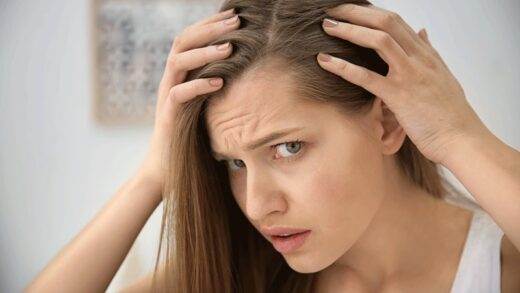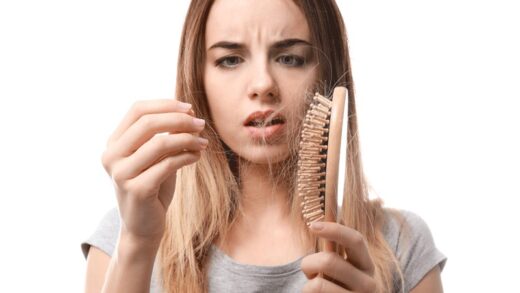Alopecia areata is a common autoimmune disease that results in unpredictable hair loss. The treatment depends on the cause. You can check out our blog for more.
What is Alopecia Areata?
Skin diseases are one of the most common health problems in society. Some skin conditions can develop tailor-made to haired skin. One frequent among these ailments is ringworm disease, also known as alopecia areata. It is a hair loss problem that appears to be the size of an iron coin in certain parts of the haired skin.
What Causes Alopecia?
Alopecia causes are not fully known. Researches show that this disease occurs as a result of the body’s immune system attacking healthy hair follicles. A baldness problem occurs in this area due to damage to hair follicles. Until the healing period, new hair is prevented from growing.
However, it has also been observed in clinical trials that ringworm disease can occur along with other health problems. This problem has been experienced in the course of autoimmune-origin diseases such as type 1 diabetes, and joint rheumatism. It has also been found that similar ailments can occur in people with ringworm disease in their families.
Other than these, the elements that cause this disease are:
- Extreme stress, sadness, depression,
- Thyroid diseases (Especially chronic inflammatory thyroid),
- Adrenal failure, Addison’s disease,
- Psoriasis
- Vitiligo
Alopecia Symptoms

Clinical symptoms of this disease vary from person to person. Some patient experience hair loss in small areas. Some experience large amounts of hair loss in large areas. This problem can also be seen in eyebrows and eyelashes.
This disease is generally characteristic and manifests itself on the scalp in different ways. As well as being skin healthy in the ringworm-affected area, there is no case of inflammation in the skin. Hair loss mostly starts on the scalp. People can have eyelashes, eyebrows, and ringworms on their pubic hair. Changes can also occur in the nail structure. The trajectory of the disease can vary and recur overall.
Types
There are different types of this disease:
Alopecia Universalis
This is a phase of alopecia areata. In this phase, hair, eyebrows and eyelashes fall off quickly.It can be seen at any age. However, there is no known cure.The disease can recover slowly on its own. Sometimes the newcomer hair is white or grey, then they return to their original colour.
Alopecia Totalis
It’s a case of the hair in the haired skin progressing until it completely falls out.The spread of the spill throughout the body is called univarsalis. However, these are extremely rare diseases.
Frontal Fibrosing Alopecia
This is a form of lichen planopilaris that is characterized primarily by slowly progressive hair loss and scarring on the scalp near the forehead. In some situation, the eyebrows, eye lashes and/or other parts of the body may be involved, as well.
Alopecia Treatments

You need to go to the dermatologist for diagnosis and treatment of the disease.
Hair-busting treatment uses drugs involved in the steroid group. These drugs are used, especially in the middle and later stages of the disease. These drugs can often be used in the form of creams, injections under the skin or injections through the hip. Sprays are used to trigger a retrieval in the area of hair or hair loss. Especially lotions with cortisone in them can be used. The hair that comes back after treatment can be discolored, white or grey. This first worries patients, but in time it will return to its original colors.
Another method of alopecia areata treatment is Immunotherapy. An active substance is poured into the problem area to create an allergic reaction. This treatment is not preferred by most doctors. This is because problems such as persistent irritation of the skin after the procedure, growth of the lymph glands, can present themselves. Medication should therefore be preferred as much as possible.
Other known treatment methods are as follows:
Injection Treatmens
Cortisone treatments are often administered to address this disease. This problem is addressed by injecting cortisone under the skin. If your disease is not linked to genetic factors, this method of treatment can yield positive results.
Medications
Medications can be administered where injection applications are not effective. Drugs that have a large side effect are not used. This treatment usually consists of several drug ingredients.
Topical Immunotherapy
This process is usually administered to patients with a lot of hair loss. Chemicals are applied to produce an allergic reaction to the scalp. If beneficial, the resulting reaction will allow the hair to grow back. However, an itchy rash occurs. This process has to be applied several times to make the hair grow longer.
Hair Transplant
Hair transplantation procedures are being performed as the last course of treatment. After hair loss, there is only one solution to the baldness problem. A hair transplant will help you regain your shedding hair. Your hair, which you regain with a hair transplant, becomes permanent for life.
How to Stop Alopecia Areata From Spreading?
First, the underlying causes of this problem must be identified. The spread of the disease can be prevented by administering a treatment according to the problem identified. However, you need to keep your immune system strong. If you have a non-potent immune system, you become more prone to alopecia disease.
Frequently Asked Questions
Can your hair grow back if you have alopecia?
Yes. In most patients, hair that falls out can regrow in a year or two. In others, baldness as a result of spillage can be permanent. But you can solve this problem by planting new hair. The hair transplant methods in this regard offer you the definitive solution.
Is alopecia caused by stress?
This disease can develop due to many underlying causes. These can be genetic factors, non-strong immunity or any chronic disease. Besides, being stressed is one of the main causes of alopecia areata. If stress – related illness has developed, the way to relieve it is to reduce your stress.
What causes alopecia in females?
The problem of hair loss increases in women, especially during some special periods. These can be periods of menstruation and pregnancy. In addition, women with high levels of stress may have the same problem. This disease is not more likely to occur in women than in men. But still women with high levels of stress are more prone to this disease.